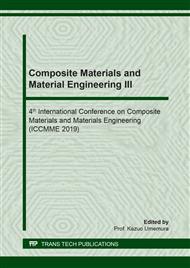p.172
p.179
p.187
p.193
p.199
p.205
p.211
p.219
p.227
A Study on Heat Transfer Suppression Characteristics of Ferrofluid with Various Magnetic Field Intensities
Abstract:
The objective of this study is numerically to investigate the heat transfer suppression characteristics of the ferrofluid with the various magnetic field intensities. In order to analyze the heat transfer suppression characteristics of the ferrofluid, the temperature characteristics and average Nusselt numbers of the ferrofluid were considered with variation of the magnetic field intensity. The magnetic field intensity ranged from 0 to 30000 A/m in order to analyze the effect of the magnetic field intensity on the insulation performance of the ferrofluid. The governing equations for mass, motion, momentum, energy, magnetization and Maxwell are used for the numerical analysis of the ferrofluid. The GSMAC method was used to solve the equations. The average temperatures of the ferrofluid at left cooled area were decreased with the increase of the magnetic field intensities. The average Nusselt numbers of the ferrofluid at the hot side with the magnetic field intensities of 10000 A/m, 20000 A/m and 30000 A/m were 43.7%, 61.4% and 63.8% lower than those at the magnetic field intensity of 0 A/m, respectively. The average Nusselt numbers of the ferrofluid at the cold side with the magnetic field intensities of 10000 A/m, 20000 A/m and 30000 A/m were 50.5%, 79.7% and 83.3% lower than those at the magnetic field intensity of 0 A/m, respectively. The heat transfer characteristics of the ferrofluid were suppressed under strong magnetic field intensity. As a result, the ferrofluid could be considered to improve the insulation performance of thermal storage tank.
Info:
Periodical:
Pages:
199-204
Citation:
Online since:
May 2019
Authors:
Price:
Сopyright:
© 2019 Trans Tech Publications Ltd. All Rights Reserved
Share:
Citation:


